EOS 5D and 24-105 f4L IS USM
v
EOS 20D and 17-85 f4-5.6 IS USM
PART 6 - Dynamic Range
I do not propose to compare the dynamic range of the EOS 5D and 20D. The EOS 5D is not yet supported by Adobe Camera Raw, and my initial tests indicate that Adobe Camera Raw is able to extract significantly more details from highlights than the Canon raw converter software "Digital Photo Professional". Comparing output from Adobe Camera Raw and Digital Photo Professional, you would conclude that the Adobe Camera Raw result had better dynamic range, even though both results came from the same Raw file! A meaningful comparison should therefore wait until the best software is available to process both Raw files.
However, I did think it was worth a few words and images about the dynamic range of the 5D, at least just to end some of the pointless speculation and rumour in the internet. All conversions were done with Digital Photo Professional, so I would expect an improvement using superior third-party raw converters when they become available.
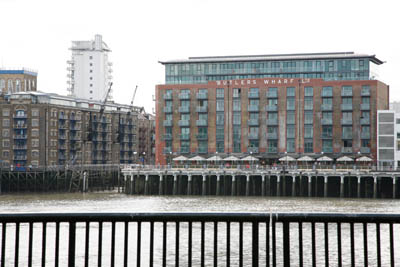
The image above was shot "into the sun" at 1/125th of a second at f8, 125ASA, on aperture priority mode with no exposure compensation. The camera has overexposed by 2 stops (assuming you want to retain sky detail) and has completely blown out the sky.
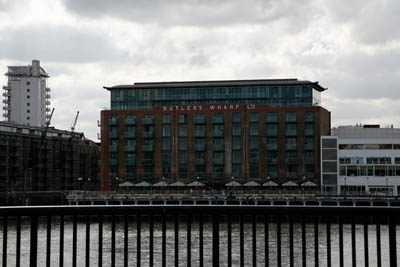
Above is a similar shot, at 1/400th of a second at f8 (still 125ASA), using 2 stops of underexposure compensation. On screen from the JPEG it looks like some of the highlight detail in the sky is still blown out and most of the detail in the left hand building has disappeared into blackness. However, no meaningful evaluation of dynamic range can be made from a JPEG file (although that doesn't stop people, including some well respected photographers, trying to do so on internet equipment forums!) I expect most photographers working on a high-contrast image will not use the JPEG, but the raw file. This can be processed as follows:
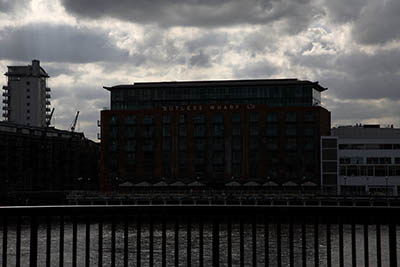
Raw file with a further -2 stops exposure compensation applied in the converter
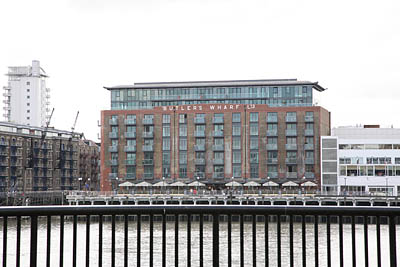
Raw file wth +2 stops exposure compensation applied in the converter
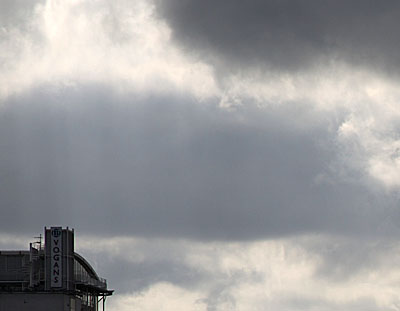
Above is the cloud highlight detail from the "dark" conversion of the RAW file. You can see shafts of light which I had not noticed when taking the photo - they may well have been invisible to the human eye! Apart from some very slight artificial colouration, the highlight detail looks none the worse for the extreme raw conversion, and no detail has been "blown out" whatsoever.
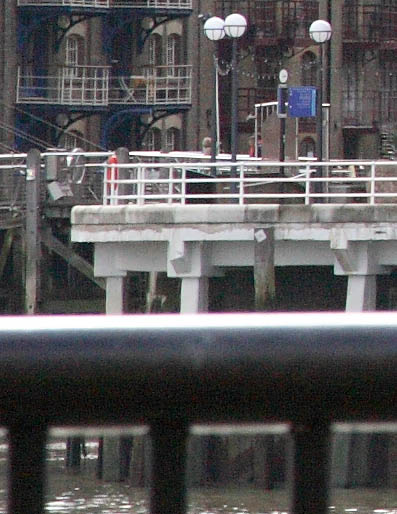
Above is the shadow detail at 100% magnification from the "light" conversion of the RAW file. The extreme conversion has introduced some noise into the shadows, but nothing major. Of course for a real print you would darken the shadows significantly (otherwise the shot would look very artificial with the dark sky).
A Real Photograph!
Having now had the 5D a few days, I thought I ought to post a proper picture I've taken with it. I took one in passing at 1000ASA, wide open and hand held at 0.3 seconds which was surprisingly sharp and noise-free, but still thought it was worth going back with the tripod the next day (fortunately the foreground sailing ship was still in residence):
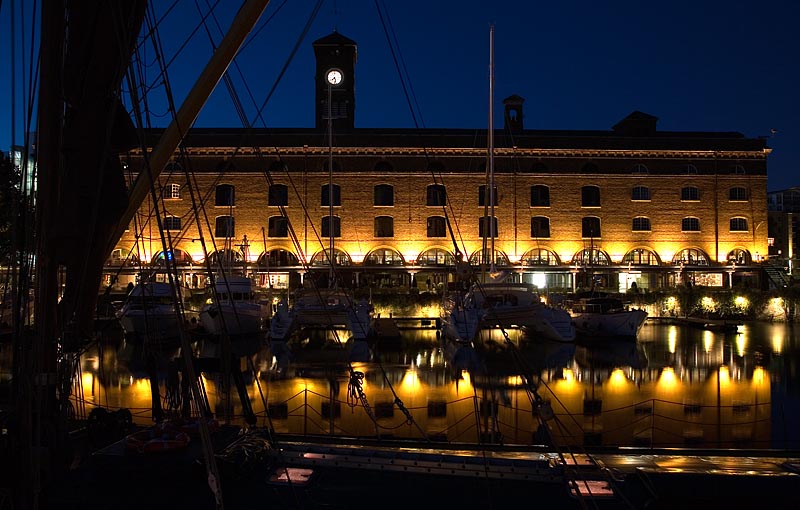
Conclusion
For me, the 5D and 24-105L combination is better than the 20D and 17-85. No surprise there. Really, the results of my tests are that there are no surprises. The 5D is as good as I expected it to be, and I expected it to be amazing. For my travel purposes, as an all-round compromise, it is better than the chunky EOS 1Ds, making it the best camera currently available, indeed (for my purposes) the best camera ever. But in some respects (ie telephoto shooting) the 20D is still superior, for half the money.
Links
Michael Reichmann's field report at Luminous Landscape
Phil Askey's in-depth feature-by-feature "preview" of the 5D at DPReview, including image samples
Steve Hoffmann's article on sensor size and pixel density
Mike Chaney's comparison between the 5D and 20D
Uwe Steinmueller's review of the 5D at Digital Outback
Comparison between 24-105L IS and 28-135IS at Luminous Landscape
Comparison between 24-105L IS and 24-70L at Luminous Landscape
The comparison between the 24-105L IS and 28-135IS at Luminous Landscape is that it would appear to show that there is less difference between those two lenses than there is between the 24-105L IS and the 17-85 on the EOS 20D.
reviews/equipment/canon_5D/Canon_5D_review.html